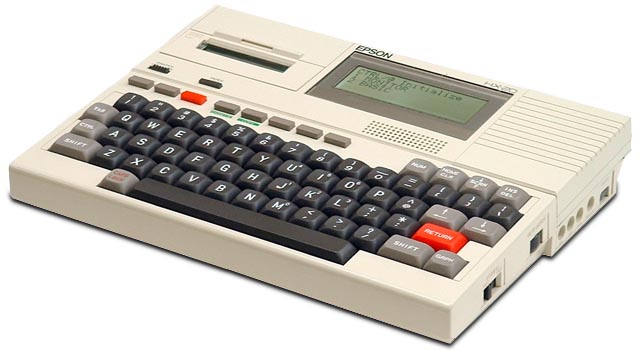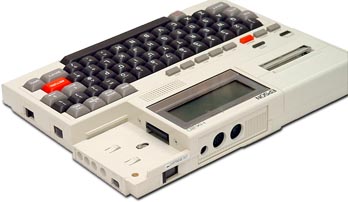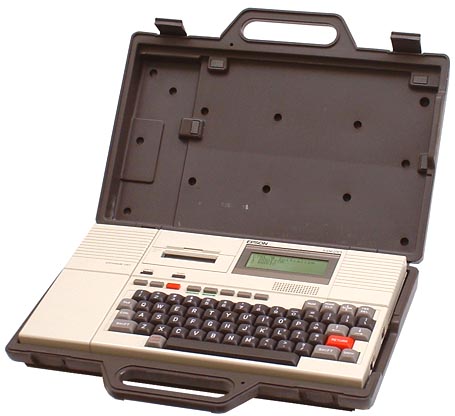
|

 Storage device? Yes, there is an optional on-board miniature micro-cassette recorder ($135) for data storage.
It is very reliable and easy to use - the data is actually stored twice, and there are no buttons to press -
it is controlled entirely by the computer. One micro-cassette tape (30 minute) holds about 50K of data.
Storage device? Yes, there is an optional on-board miniature micro-cassette recorder ($135) for data storage.
It is very reliable and easy to use - the data is actually stored twice, and there are no buttons to press -
it is controlled entirely by the computer. One micro-cassette tape (30 minute) holds about 50K of data.
 Althought the screen seems rather small - only 4 lines of text, 20 characters per lines - this was one of the
largest LCD screens available at the time.
Althought the screen seems rather small - only 4 lines of text, 20 characters per lines - this was one of the
largest LCD screens available at the time.
